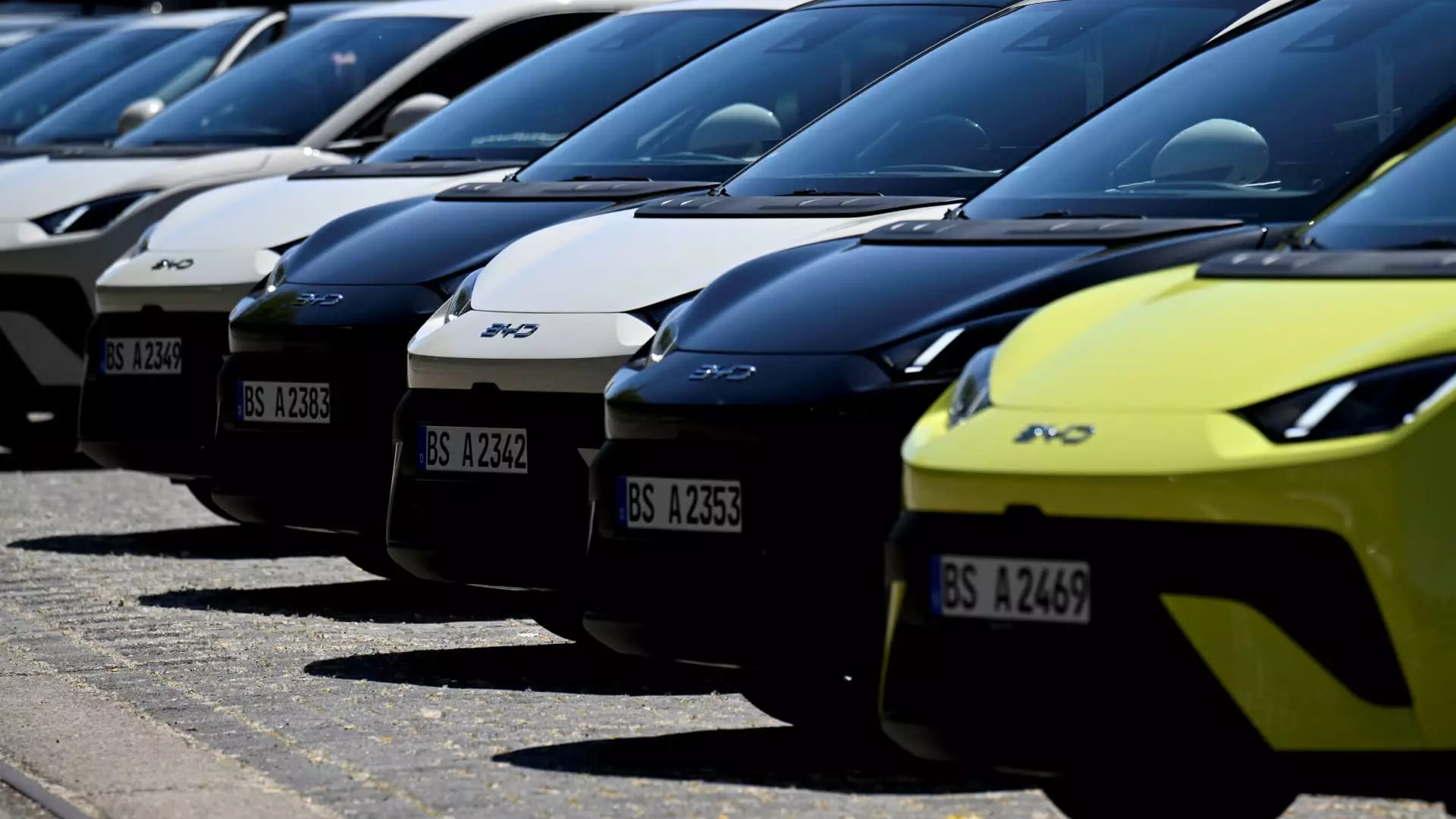The electric vehicle (EV) market in China has recently experienced a tumultuous swarm of aggressive price strategies, leading to a serious reevaluation of the industry landscape. The battle for market supremacy is not merely about sustainability and innovation; it’s about survival. Although Tesla stands as the global leader in EV sales, it recently reported a 15% drop in sales from the previous year in China, a market that’s essential for its growth strategy. The stark contrast in performance between Tesla and the local contender BYD, which saw an impressive 14% increase in year-on-year sales, raises pertinent questions about the sustainability of Tesla’s dominance when indigenous brands redefine the “value” proposition for consumers.
Tesla’s decline is a harbinger of deeper issues within its operational and marketing strategies in a rapidly evolving competitive environment. The American giant seems to be losing ground not just to BYD but also to a plethora of up-and-coming manufacturers who are offshoots of a fiercely innovative ecosystem. As buyer preferences shift towards more competitively priced models with better specs, Tesla’s premium pricing strategy might soon face existential threats from both new entrants and established local players.
BYD: The Dubious Benefits of First-Mover Advantage
Despite BYD’s ascendancy to the top of the sales rankings, it is not exempt from the volatile dynamics of the price war. The aggressive discounting strategy it has been forced into raises questions about the long-term sustainability of its market lead. Analysts note that BYD is falling short of its sales targets, hinting at a troubling narrative: that even market leaders can be voraciously consumed by the same forces that once elevated them.
By all accounts, BYD has successfully wielded unparalleled brand recognition and familiarity to capture a significant market share. Yet its recent price-cutting measures appear reactive rather than proactive, risking brand dilution and profitability. Meanwhile, the company’s planned expansion into overseas markets could serve as a double-edged sword. Should BYD succeed abroad, it might offset the immediate pressures of domestic competition; however, a misstep could also strain resources and reinvigorate investor skepticism.
The Rise of Geely: A Calculated Approach to Competition
In this charged atmosphere, Geely stands out as a prime example of strategic positioning. Not only does it embrace a multi-brand strategy with its offerings—Galaxy, Zeekr, and Lynk & Co.—but it also harnesses synergies in technology and manufacturing. These factors have given Geely a competitive edge, placing it as a prominent contender in the race against BYD. Analysts are beginning to view Geely as the “best positioned” entity in this landscape, and rightfully so.
By closely monitoring market trends and adopting an agile approach to pricing, Geely has demonstrated that it understands the balance required to innovate while maintaining competitive prices. The vehicle market is not just about selling cars anymore; it’s about providing a narrative—a promise encapsulated in features that resonate with consumers seeking value without compromise.
Xpeng: The Tech-Savvy Contender
Emerging from this fray is Xpeng, heralded as a beacon of technological advancement. With its state-of-the-art driver-assist systems and a burgeoning lineup of new car models, Xpeng draws consumer interest while spurring a competitive edge through innovation. The achievement of consistent growth—over 30,000 deliveries for seven consecutive months—substantiates Xpeng’s differentiated strategy in a now crowded field.
As the company introduces budget-friendly options under its Mona brand, it could very well undercut BYD and others with similar offerings. Analysts posit that Xpeng’s focus on next-gen technology will ultimately allow it to capture significant market share and challenge established players effectively. The blend of competitive pricing and advanced features could see Xpeng shatter preconceived notions that have long dictated consumer choices in the EV space.
Market Saturation and Future Predictions
The expansive production capabilities—exceeding 50 million units—render the current supply-and-demand equilibrium dangerously fragile. With only 25-27 million vehicles sold annually, industry analysts highlight the potential for market consolidation. If the current price war escalates unchecked, we risk a saturation point that could irreparably damage not just manufacturers but consumer trust in EVs.
The essence of this dynamic boils down to one unavoidable conclusion: without structural changes in consumption and production metrics, continued discounting may numb consumers to the innovation that has driven the EV market forward. As the Chinese government shifts its focus on regulating the burgeoning market, balancing competition with sustainability will be vital. The impending consolidation forces will likely favor those nimble enough to adapt—signaling that in the EV race, only the most agile and strategically sound companies stand to prevail amidst this relentless price war.

